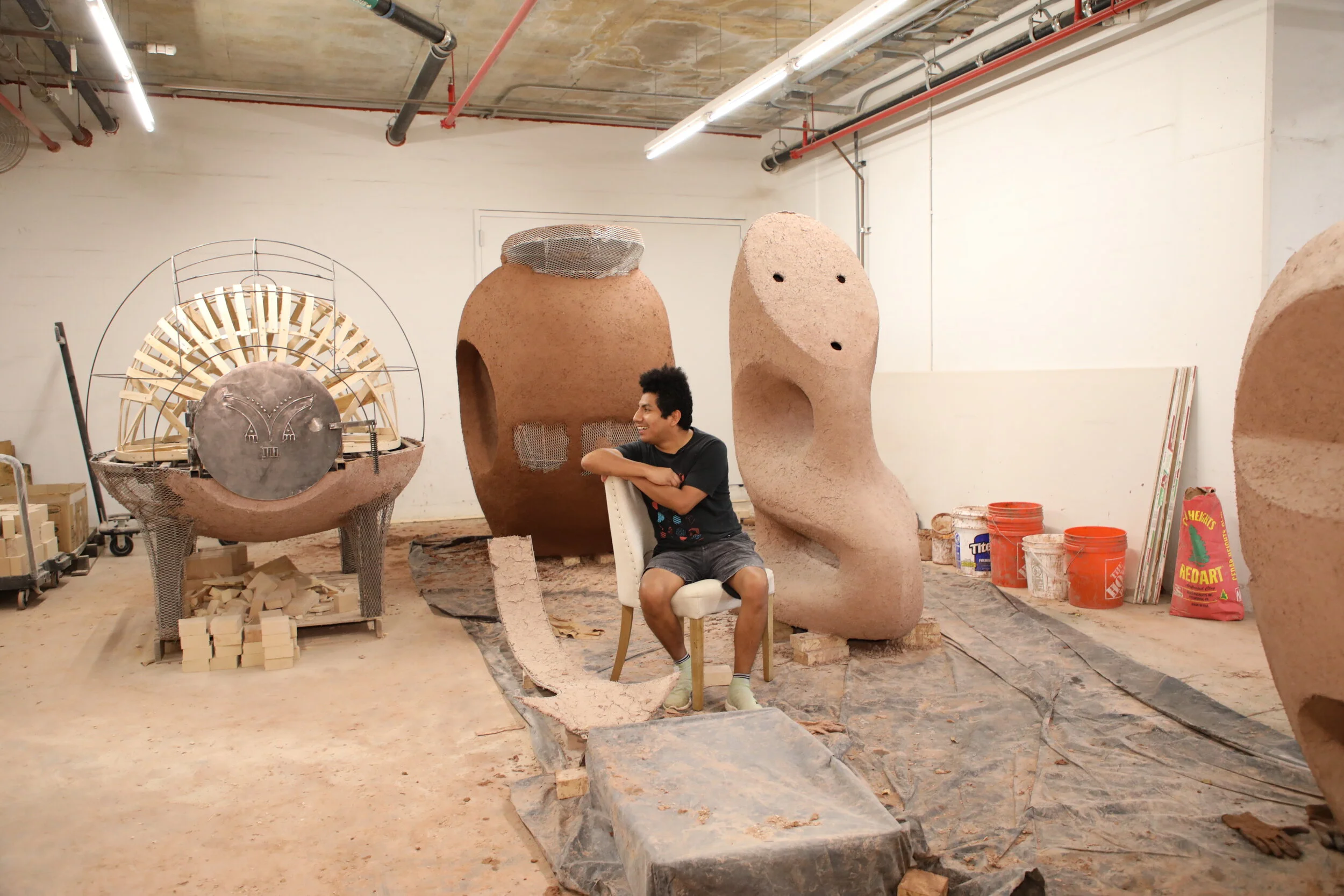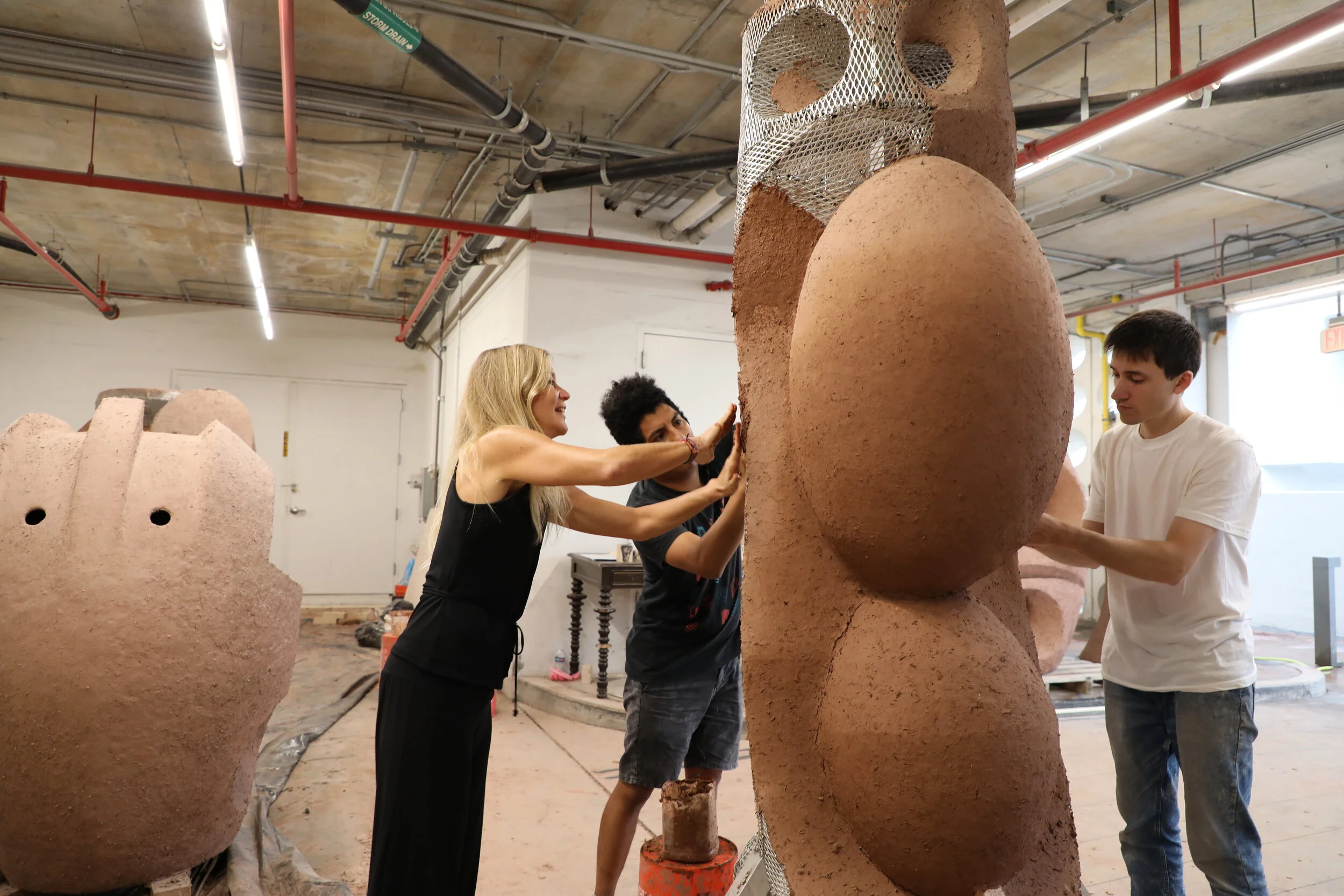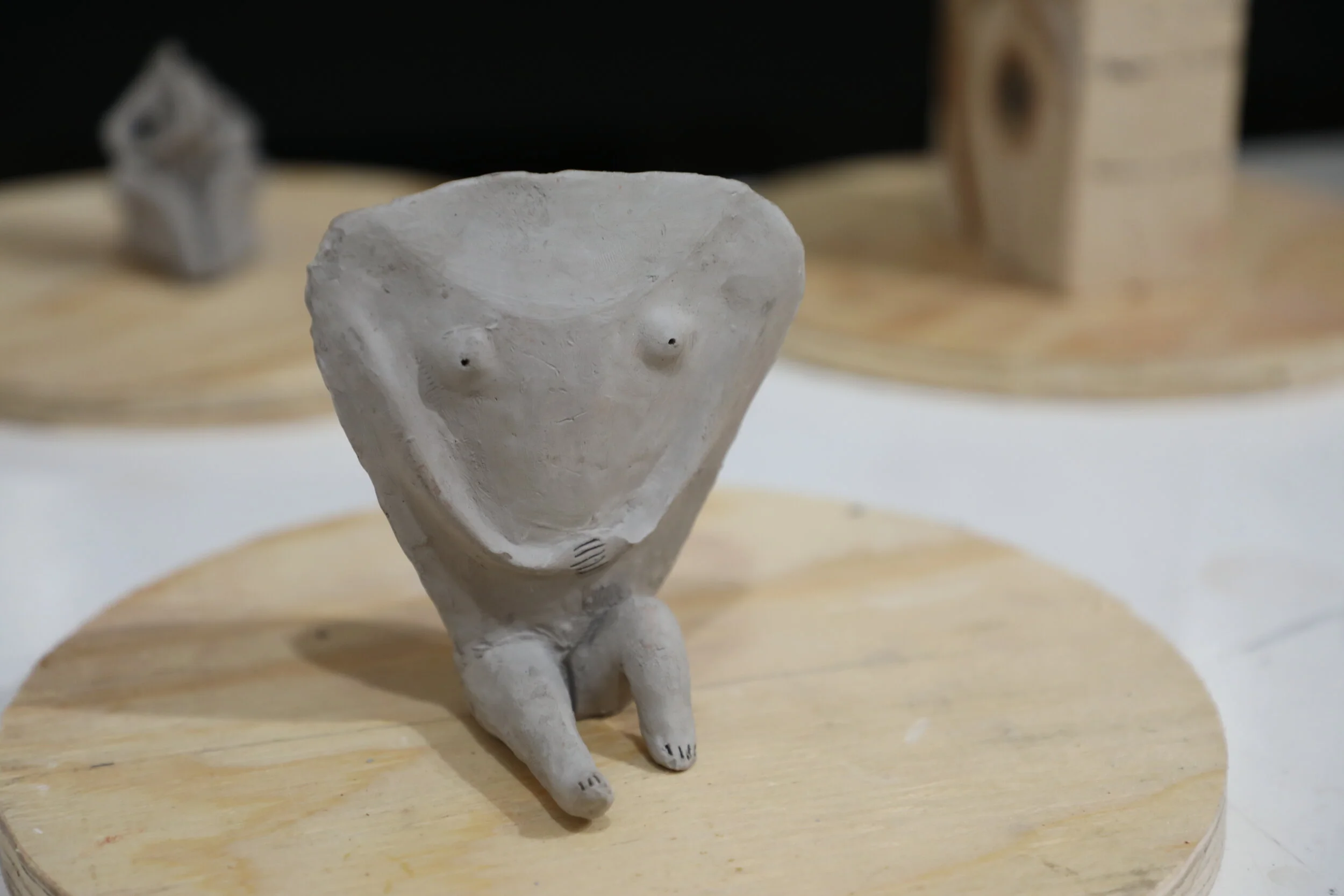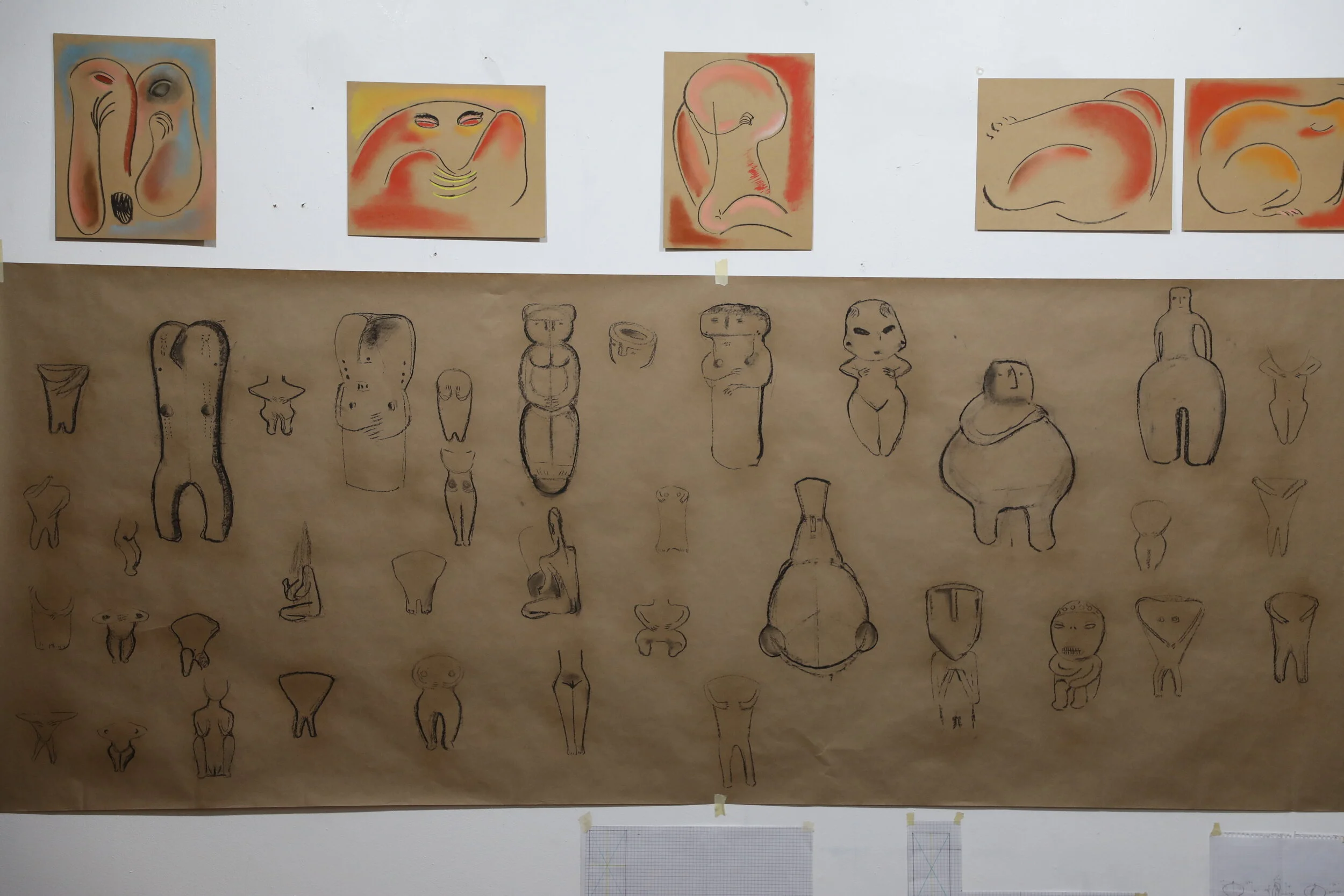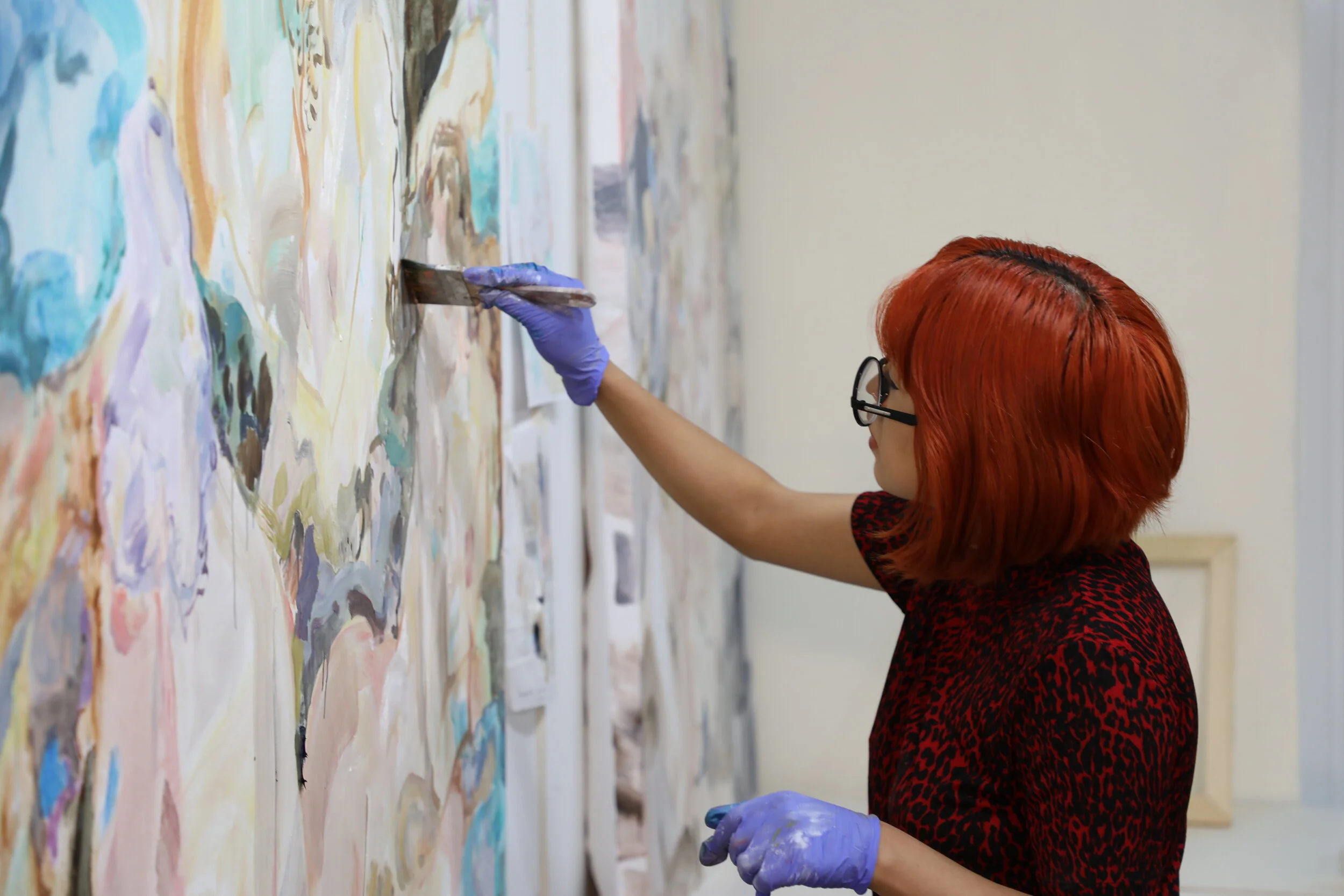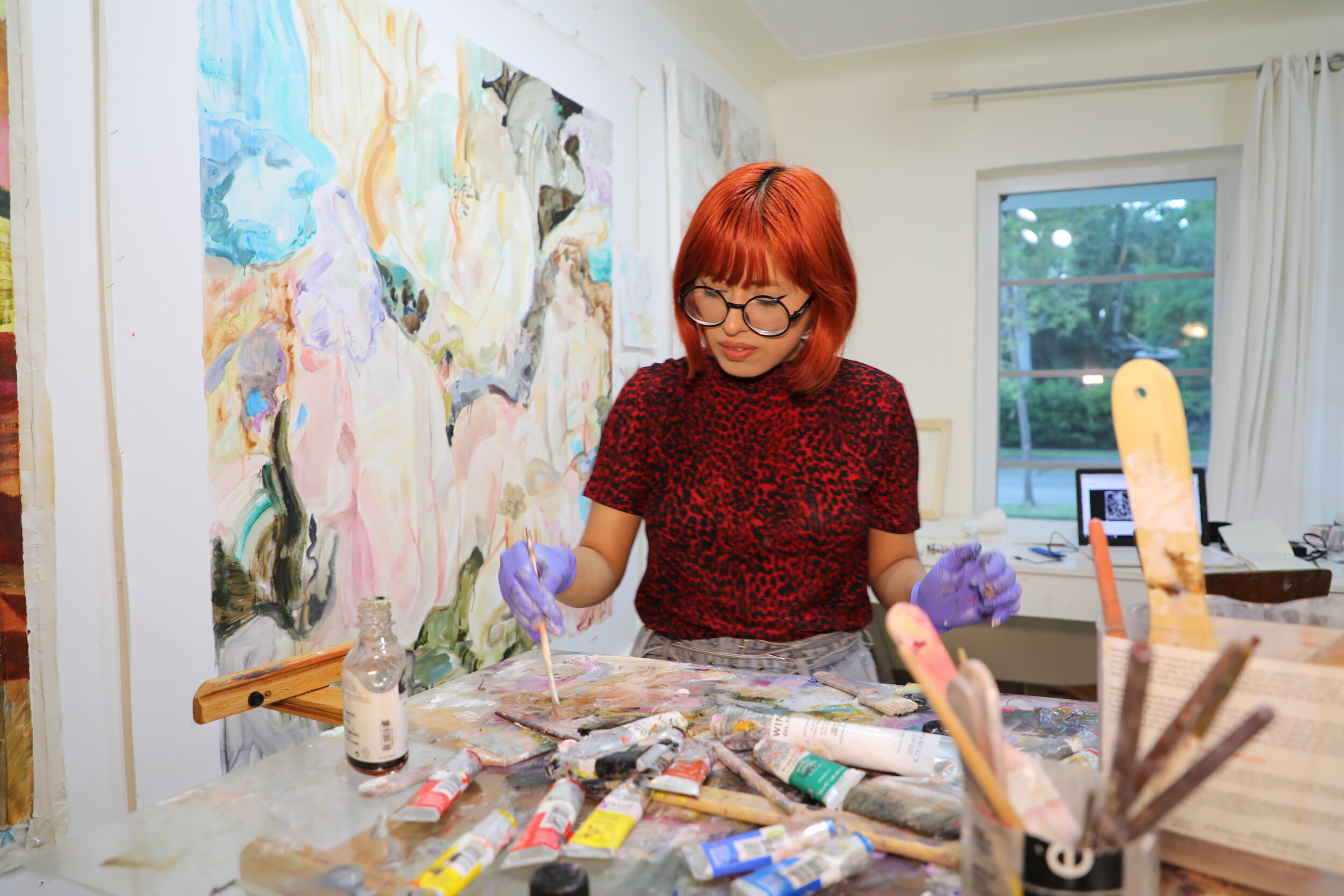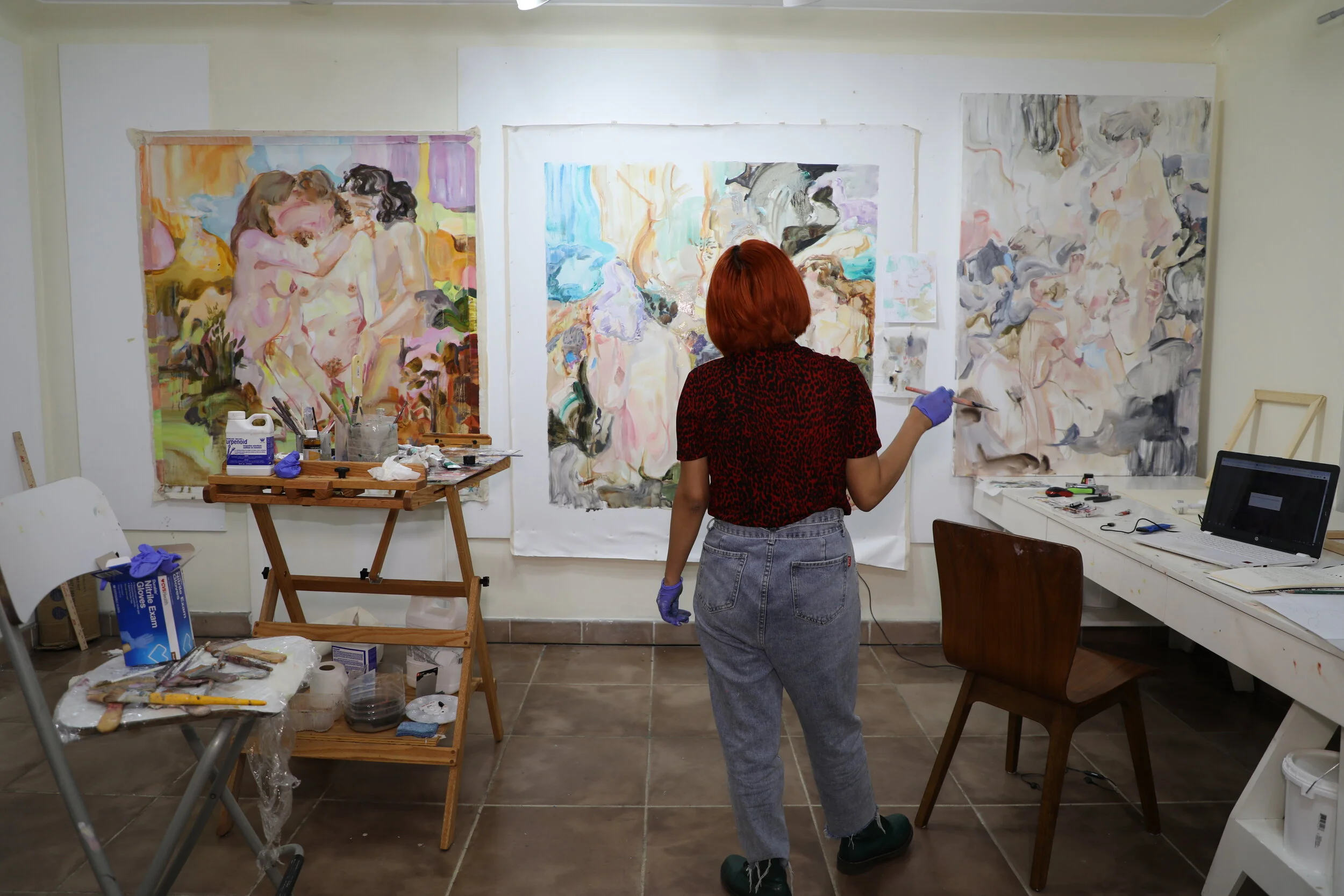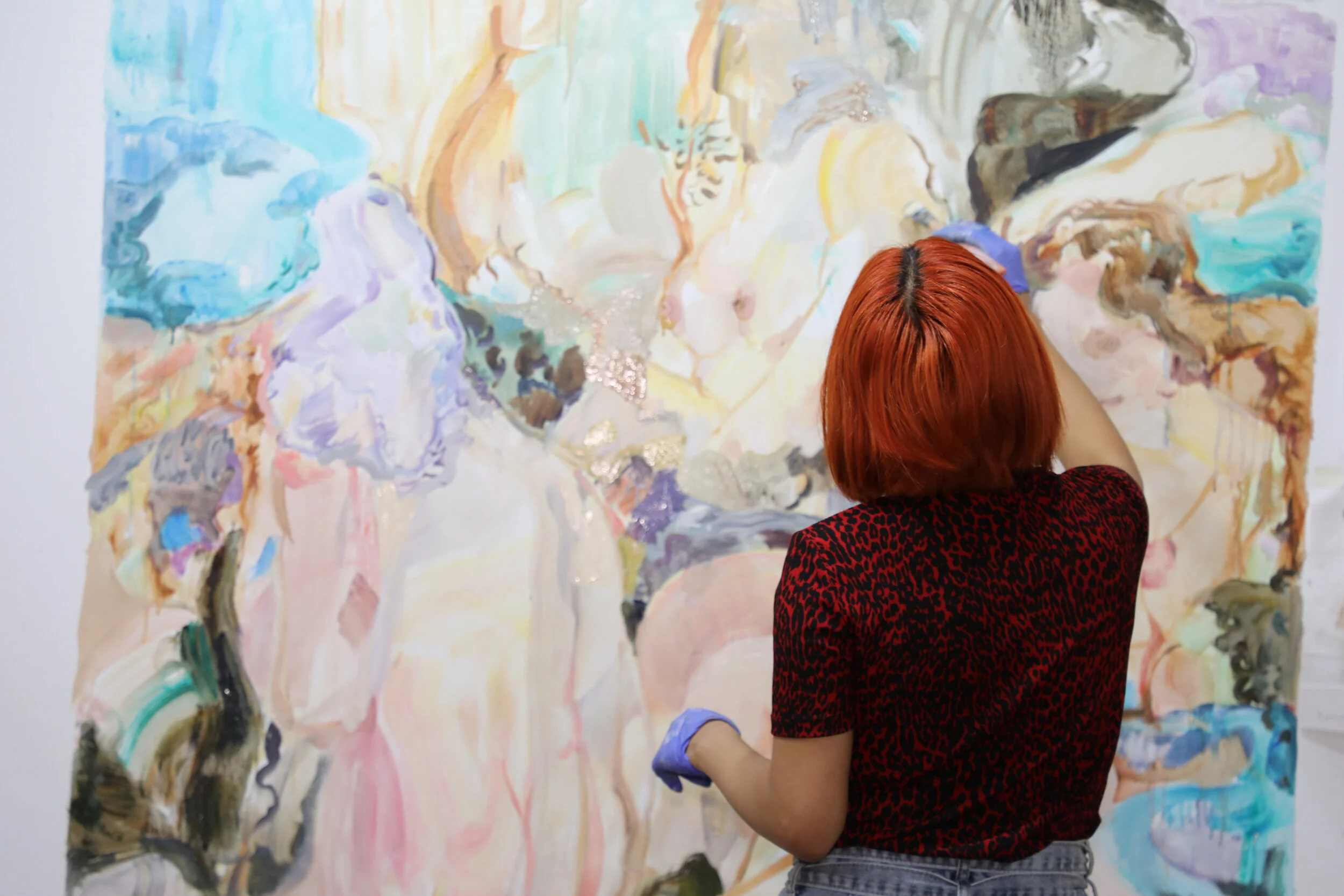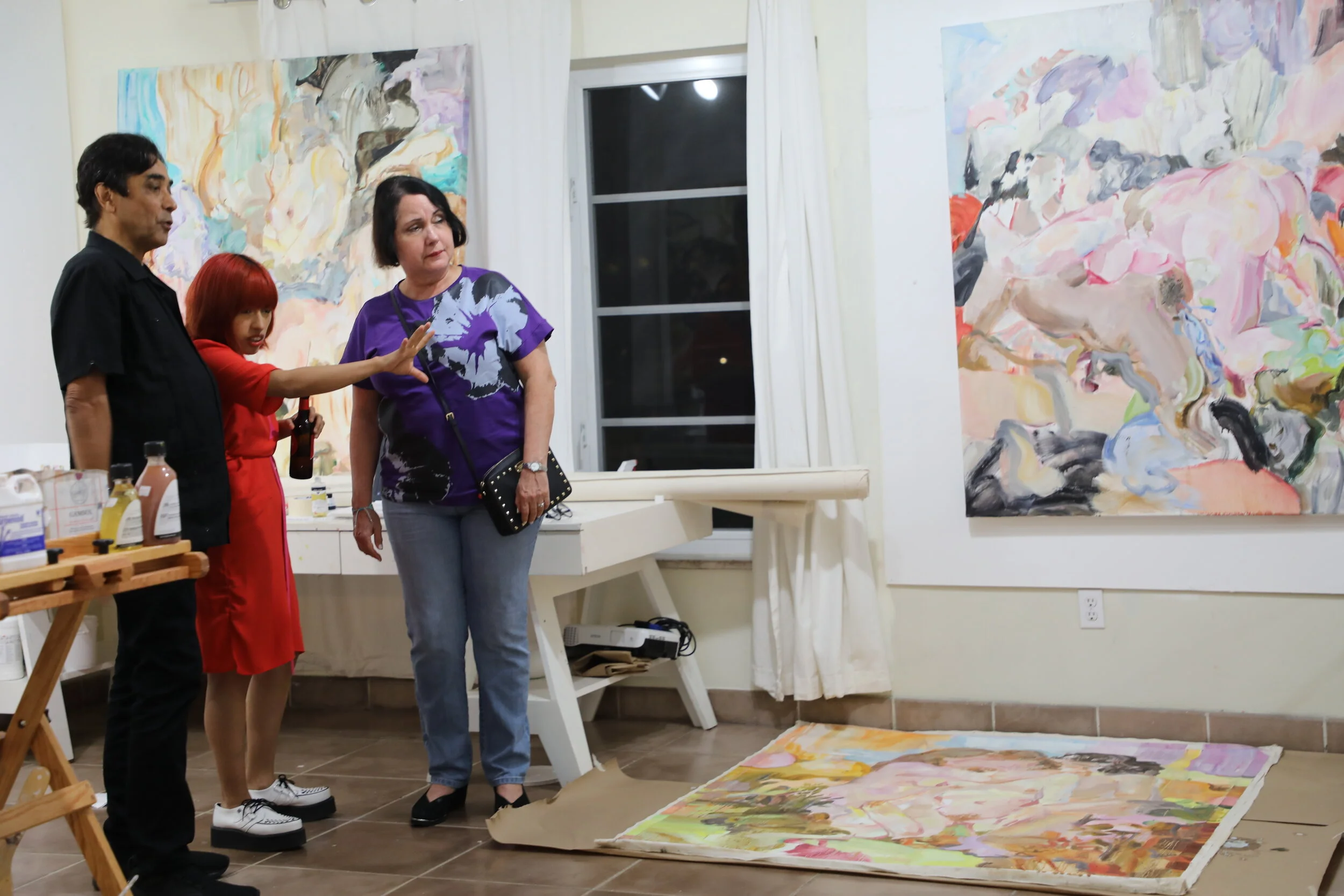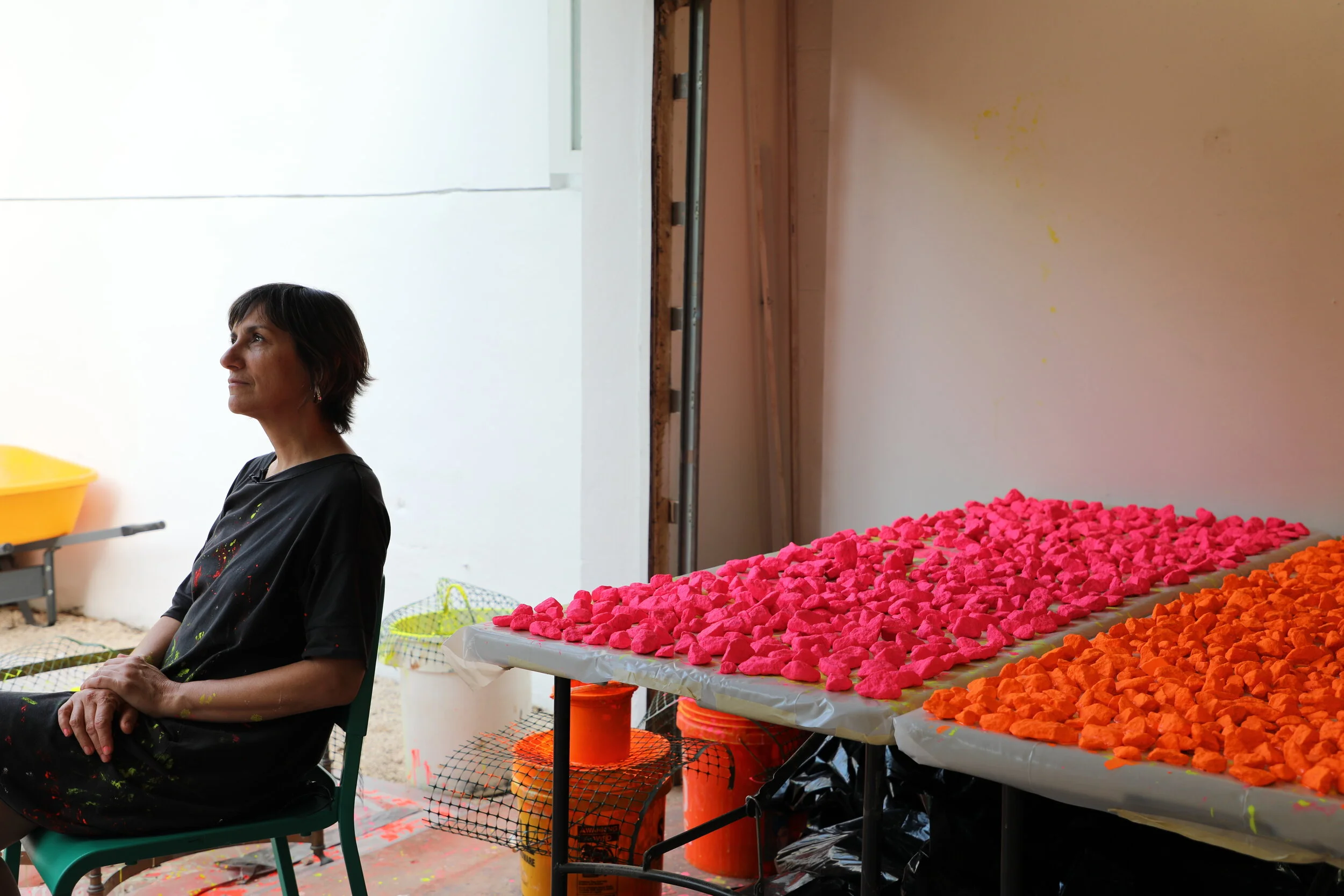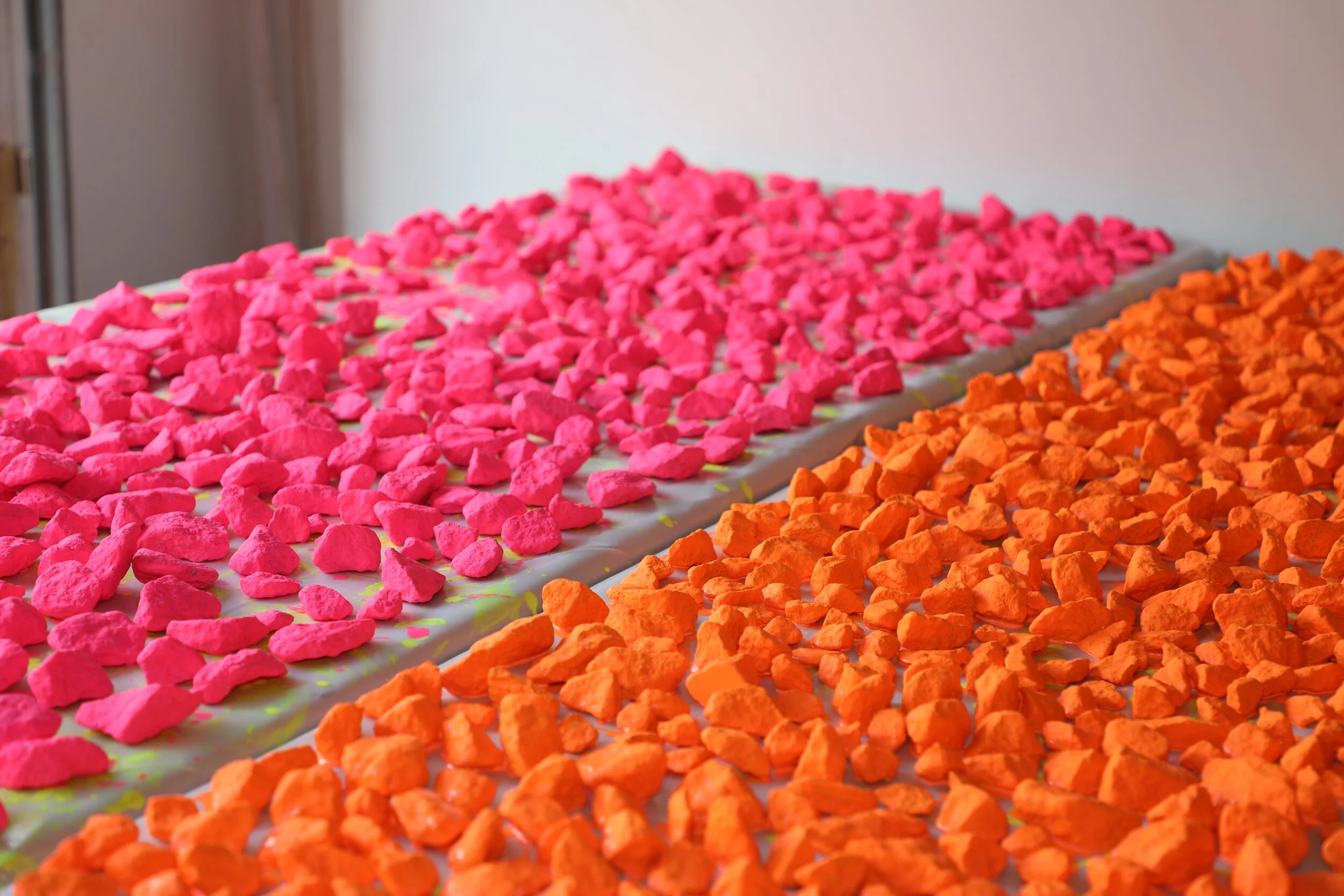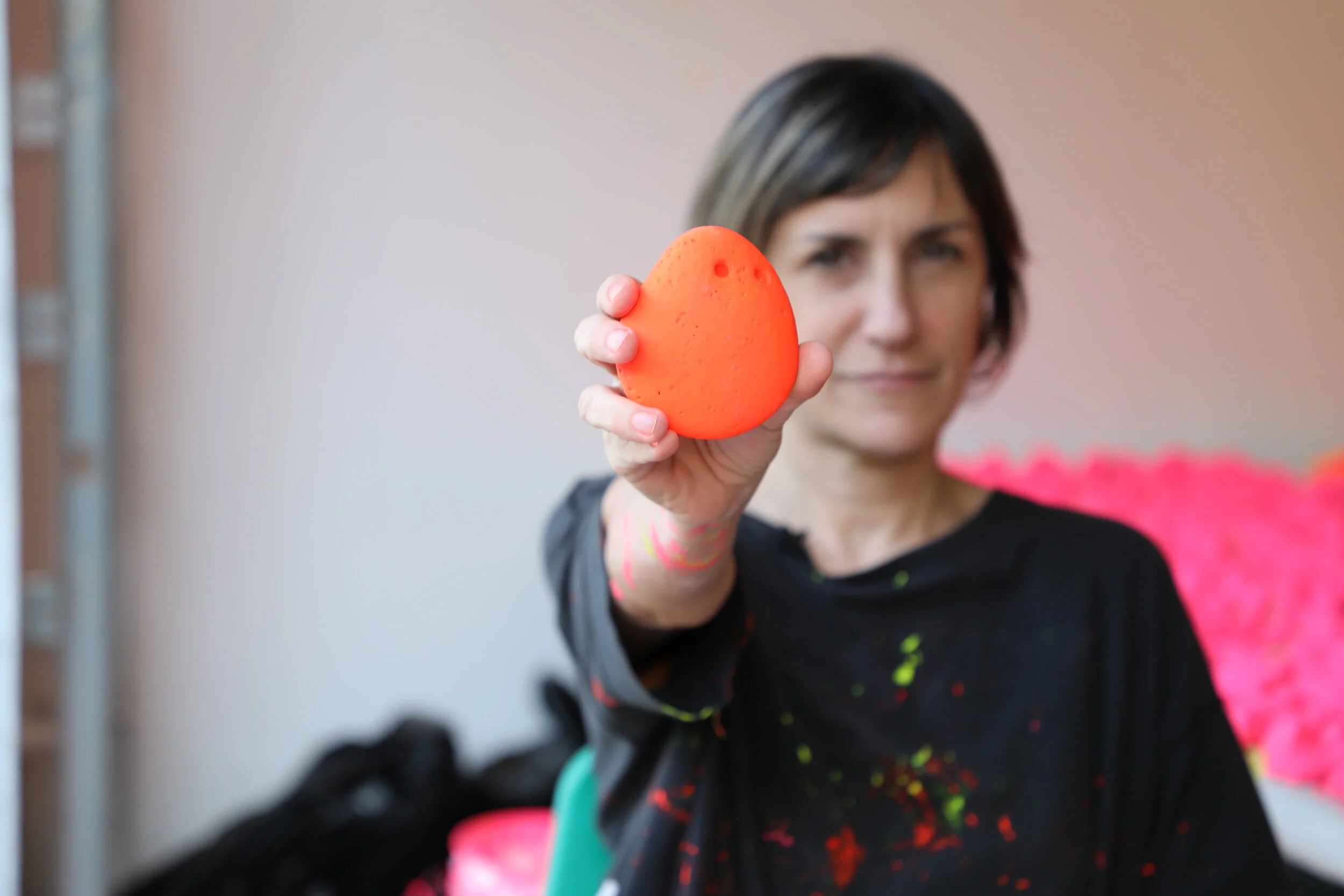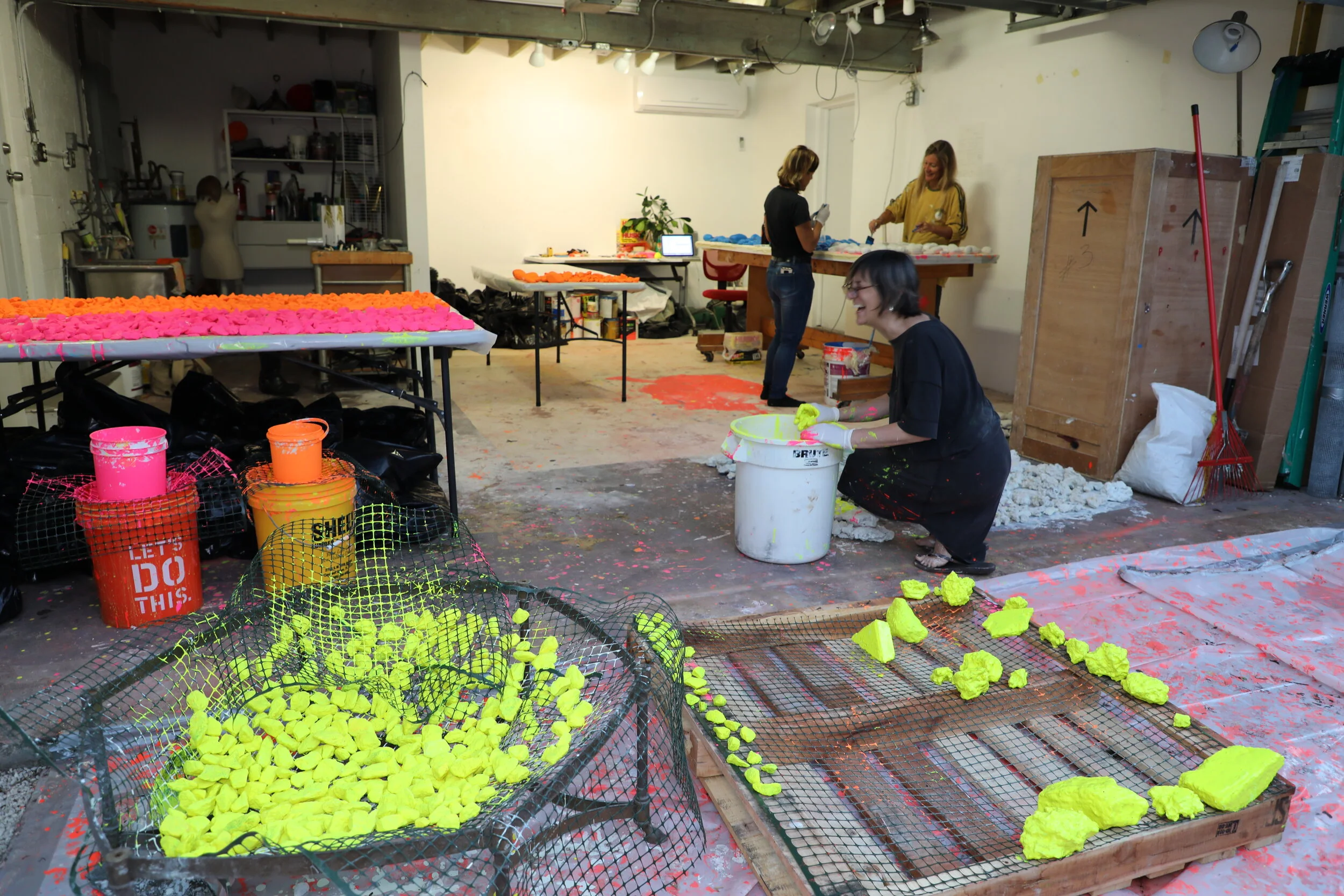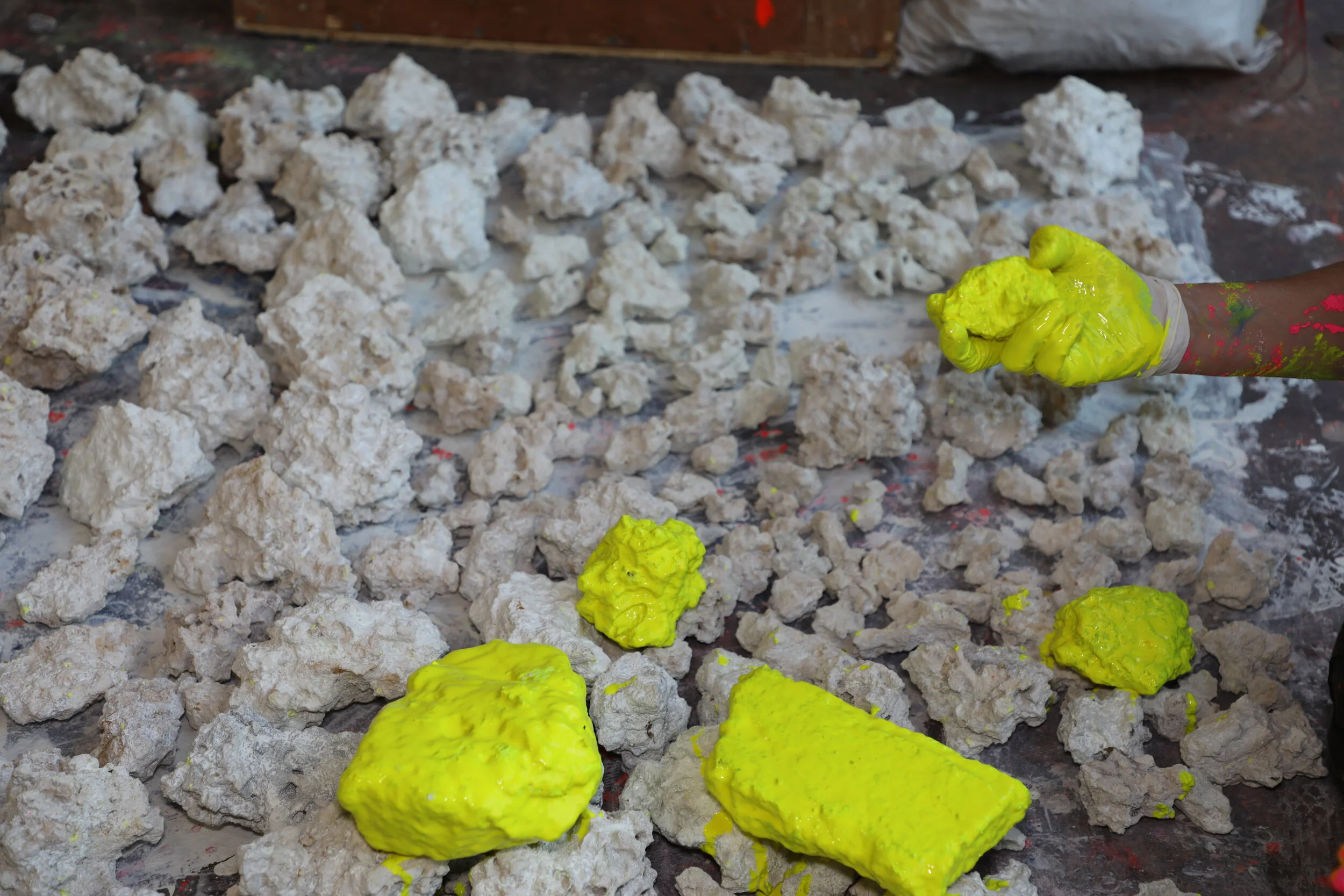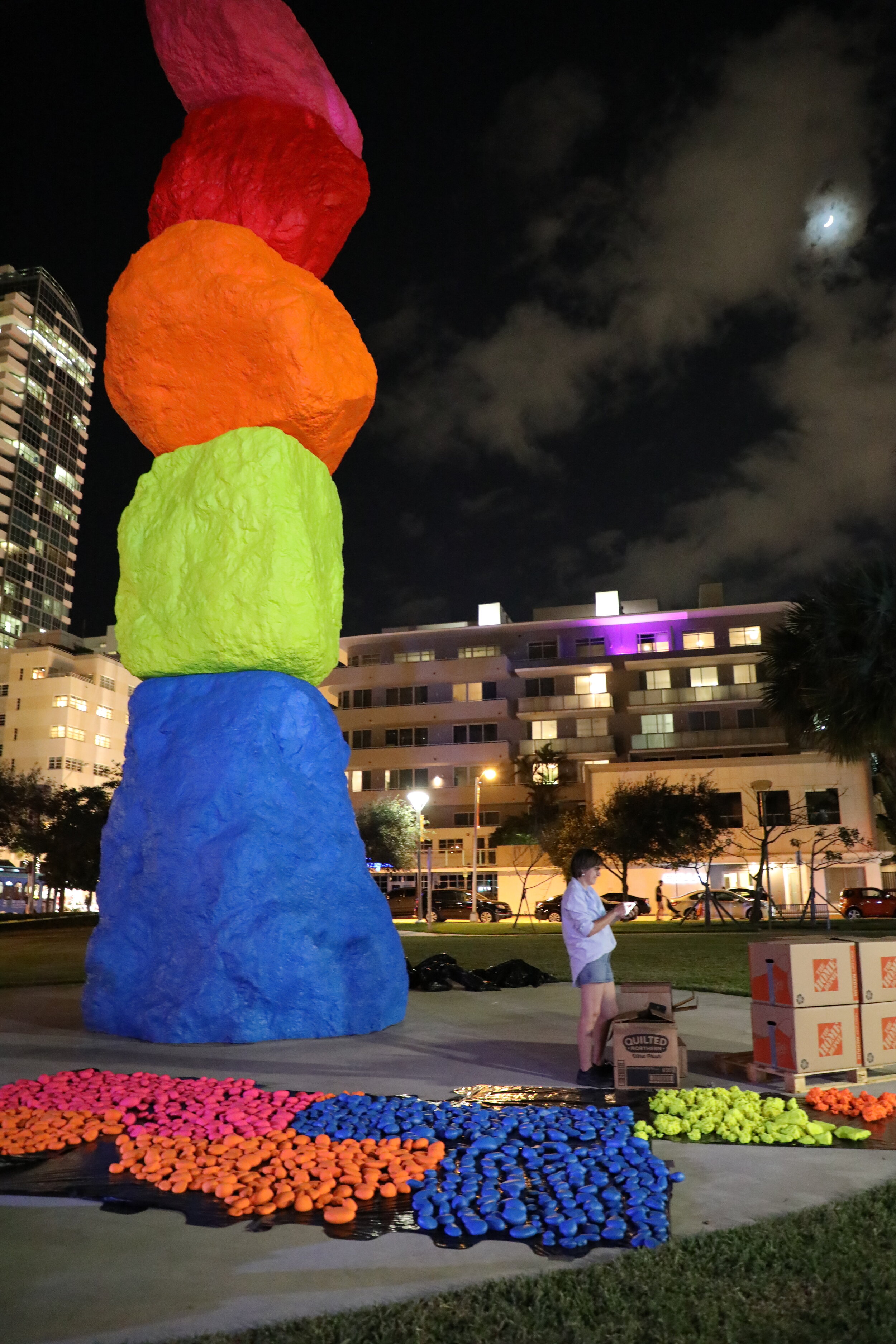December 2019
Pictured left to right: Marcela Sinclair, Gabriel Chaile and Wynnie Minerva
December is likely the most active month in Miami’s arts calendar, with the influx of national and international galleries and press in town for Miami Art Week. For the artists living and working out of the Fountainhead Residency, that maxim is no exception: With most completing work and commissions for the upcoming Art Week fairs, December’s cohort of artists still managed to find time to collaborate and make lasting connections with city residents and cultural programmers, and with each other. According to artist Marcela Sinclair, the spirit of the Fountainhead’s mission contributed totally to this feat.
“Director Kathryn Mikesell is a person that is truly here to help you dedicate yourself to your work and build relationships with the community,” she says, adding that this month’s pairing - comprised of Sinclair, alongside artists Gabriel Chaile and Wynnie Minerva, was especially dynamic. “We’re all Latin American and coming from very similar backgrounds, and it was fascinating to work together in a city that is so driven by Latin American influence,” says Minerva. “It was all very fluid.”
Showing across the city in fairs and in public spaces, Chaile, Minerva, and Sinclair allowed us to experience - and in some instances, lend a hand - to their incredibly diverse practices.
Gabriel Chaile
Argentinian-born artist Gabriel Chaile has received much recent acclaim for creating looming clay sculptures that double as an oven and participatory artwork. Inspired by a pre-columbian aesthetic, Chaile investigates anthropological visual histories and reinterprets them to suit a more contemporary vision of these historical objects. By repurposing these objects with a dual function - these sculptures double as ovens, and take a performative turn when Chaile invites the local community to break its bread - he both pays homage to indigenous culture while considering the importance of resource distribution among South American communities.
During the month of December, Chaile focused exclusively on the construction of a new commission for Faena Art, as part of the organization’s annual Faena Festival, which this year drew upon spirituality and its accompanying food practices to present “The Last Supper.” His largest work to date, the piece involved a collection of six totems referencing indigenous wayfinders and talismans, one of which additionally baked bread.
Wynnie Minerva
Minerva’s interest in erotica comes directly to the fore through her work. With an unusual process that includes painting sexual partners as they perform this most sacred act - painting only until the act is complete - Minerva works furiously yet sensitively. Languid, abstract figures painted in warm pastels give her work a romantic quality, and her decision to paint both traditional, heteronormative couples and gender non-conforming couples and groups demonstrates her interest in reframing historically imposed imposed attitudes about sexuality. “I don’t think there is a difference between porn and classical art,” Minerva says. “Both are exciting to look at. They both contribute to our perception of sex.”
Rather than posing her subjects, Minerva takes on the role of observer and in so doing, becomes a part of the act. This, she says, allows her to transition from spectator to willing participant, depicting sexuality from a more intimate position. Through her paintings, Minerva hopes to create empathy for the female form, rendering her a willing agent rather than the passive actor typical of women in a sexual pose or scene. “I have always been interested in the depictions of nude women in classical art - I admired their style and technical prowess, yet I didn’t feel represented by those paintings,” she says.
In Miami, Minerva completed a series of paintings in process for the Untitled art fair, where she was showing with Peruvian gallery Ginsberg. “My time at Fountainhead has been wonderful to consider how this work can continue to take shape,” she says.
Marcela Sinclair
Hailing from Buenos Aires, Sinclair was one of six Argentine artists selected for Disruptions, a public exhibition commissioned as part of Art Basel Cities that took place in Collins Park. Each of the artists were asked to produce a site-specific work that invited viewers to question the function of public space, and reconsider a park they may have many times overlooked. Sinclair was immediately drawn to Ugo Rondinone’s now-iconic Magic Mountain, a towering, vibrantly-hued obelisk acquired by the Bass Museum for Collins Park not long ago. Attracted by the humorous land art twist the rock formation performs, Sinclair thought that large monuments are powerful representations that remain paradigmatic for public art.
“I wanted to propose an exercise for a more democratic way of sharing public space, even if it implies a risk. In my city, loose stones in public plazas are forbidden, as they can be used by protestors to defend themselves from police repression. So I thought, what would happen in Miami, in this artistic context, if I threw rocks in the park?”
The resulting work - a deconstruction of Rondinone’s sculpture that loosely installs hundreds of colored rocks around the sculpture and invites the public to interact with the stones - perfectly sums up the playful nature of Sinclair’s work.
With public interventions forming the core of her practice, Sinclair regularly considers how public action shapes public space. “Public space is where community is created, so I’m particularly interested in what happens when a public space’s intention is intervened by the actual public,” she says. “It’s the public who ultimately decides how the space will be used and what will be allowed there.” Her interest in public space is present even when Sinclair is working in a two-dimensional plane - she often intervenes images of public buildings as a way of bifurcating the private and public realm. Those works - along with several others - were exhibited at Untitled art fair via her Buenos Aires-based gallery, Mite.


